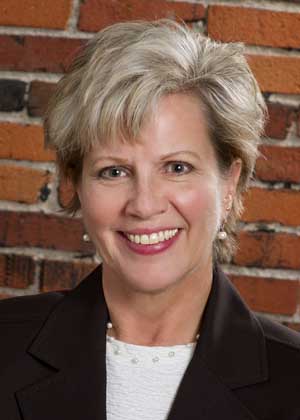
When the National Grape Research Alliance met in Minnesota last summer, we toured the University of Minnesota Horticultural Research Center and experimental vineyard with grape breeder Matt Clark, as well as the impressive Minnesota Landscape Arboretum. At each meeting, board members take turns sharing from the perspective of their sector or region in the industry, as the alliance represents wine, juice, table and raisin grape industries.
Representing the vinifera sector, my task was to share five leading issues or threats that were researchable topics. With the input from industry, the list included:
—Vectored diseases: Mycoplasmas or viruses transmitted by insects or nematodes.
—Rootstock breeding: Industry is using rootstocks from the last century, when one size fit all, and now needs rootstocks for regional conditions.
—Mechanization: The continued inability of Congress to address labor and the subsequent labor shortage has had an impact on demand for mechanization.
—Environmental disaster mitigation: Everything Mother Nature can throw at us is a current issue, including heat, fire, climate change, smoke and cold.
—Clean plants: The red blotch stumble at Foundation Plant Services caused national repercussions, but the industry learned not to put all clean plants in one spot and also recognized the urgent need for backup locations to be identified for all economically important varieties. Plus, industry selections must be broad enough to be economically important to a majority of the national industry yet specific to a region or sector. For example, Washington has no raisin grapes and few table grape varieties, as the preponderance of grapes grown in the state are either juice or wine, while the needs of our sister industry in Oregon are very different from Washington — but both need clean plants.
With each topic, the industry can choose to — or is forced to — respond with a reactive or a proactive approach. For example, while mechanization has been a research and development darling for decades, only once the ag industry was painfully short of labor did the focus and funding quickly move toward mechanizing. Environmental disasters are difficult to proactively address, but research can, and is, preemptively seeking options, including breeding to develop cold-hardy plants and to minimize other impacts of climate change.
Building clean plant capacity falls clearly in the proactive camp. The industry has control over decisions on if, when and how many plants are cleaned. Federal funds through the U.S. Department of Agriculture’s Animal and Plant Health Inspection Service, thanks to the Farm Bill, offset the expenses associated with clean plant centers around the U.S., but those funds do not cover all expenses. The benefiting industry is expected to share the burden — as it should. The challenge is finding annual funding in an economically tight environment and doing so in a way that is fair to the commodities involved. In the Pacific Northwest, the crops include hops, tree fruit and grapes.
For the Clean Plant Center Northwest, this means trying to raise funds for operations, both short-term and long-term; address which plants remain in the foundation block, considering space and cost to maintain; determine planting needs for each industry in the next five to 10 years and provide the needed intentional redundancy for the whole country; plus, keep industry groups updated and engaged. That turns out to be a heavy order for a cash-strapped industry service struggling with the wildly different expectations of its constituency. The three crop groups do not agree on how much or whether their industry should financially contribute to the operations of the clean plant center at all. However, we disagree to our peril. Without sustainable funding by the tree fruit, hop and grape industries, our future may not include having virus-tested planting material available in our backyard.
Another proactive approach is the response to wildfire smoke — an alarming environmental disaster — with collaborative coordination on the entire West Coast. Prompted by the Washington Winegrowers Association board, a task force originated from discussions in early 2019 between grower leaders and industry group representatives from California, Oregon and Washington. The task force held its first in-person meeting in July 2019. Since that time, the task force has convened educational webinars and produced reference materials to assist growers and winemakers with challenges associated with smoke-exposed wine grapes.
Called the West Coast Smoke Exposure Task Force, a steering committee was formed to guide task force activities. Within that, three committees exist to address contracts/grape transactions, crop insurance and research. Steering committee chairs currently include Washington Winegrowers board member Patrick Rawn and California Association of Winegrape Growers board members Mike Testa and Gregg Hibbits, along with California winemaker Alisa Jacobson chairing the research committee.
The current industry groups with a seat on the task force steering committee include:
—California Association of Winegrape Growers.
—Wine Institute.
—Oregon Wine Board.
—Oregon Wine Council.
—Oregon Winegrowers Association.
—Washington State Wine Commission.
—Washington Winegrowers Association.
—Allied Grape Growers.
—Family Winemakers of California.
Smoke impact research is by far the greatest focus to date, and the task force is working closely with USDA Agricultural Research Service scientists as well as the researchers at each of the three West Coast land grant universities: Washington State University’s Tom Collins, Oregon State University’s Elizabeth Tomasino, and University of California, Davis’ Anita Oberholster. With industry support, the university researchers successfully applied for a USDA Specialty Crop Research Initiative grant worth $7.6 million to cover four years of research focused on assessing and managing risk associated with wildfire smoke exposure.
The collaborative, cooperative and collegial, as well as prioritized and focused, effort of the West Coast Smoke Exposure Task Force should be an effective example as industry issues arise and a proactive path is favored.
—by Vicky Scharlau
Vicky Scharlau is the executive director of the Washington Winegrowers Association.






Leave A Comment